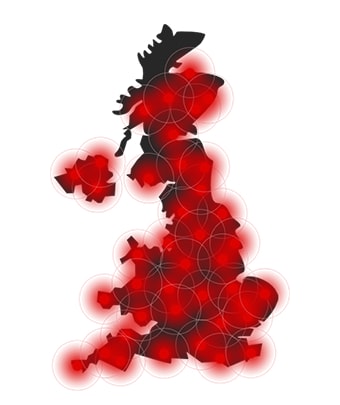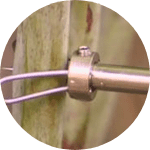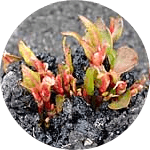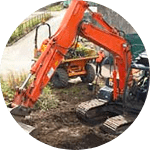Giant Rhubarb Removal & Control

The overview
Common Name: Giant-Rhubarbs (Giant-rhubarb and Brazilian Giant-rhubarb)
Latin name: Gunnera tinctoria, Gunnera manicata
In Detail
- Both species are native to South America and were introduced to the UK as ornamental plants in the 19th Century.
- The species were first recorded in the wild in 1908 (G.tinctoria) and 1935 (G. manicata) and have now become established in Western ans some lowland regions of the UK.
- Once established the species can be invasive, forming dense colonies which can spread by seed and rhizome
- Each flower head can produce over 250,000 seeds
Who we help
We have a long track record of managing some of the most complex sites in the country and have worked with the Environment Agency on several large flood alleviation projects, as well as providing advice to the majority of house builders and developers in the UK.
Click here to view who we help







Identification
- Very large clump forming herbaceous perennial. Large umbrella like leave can grow up to 2m across, stems can grow up to 2m in height
- Bristles and spines are present on the underside of leaf, stalks and stems
- Small clustered flowers form club like spikes
- The plant is spread by rhizome and by seed
- Leaves die down over winter, growing back in spring
- Rhizome can grow up to 2 meters in length along the ground
- Species can be mistaken for cultivated rhubarb and ornamental rhubarbs
What’s the problem?
- Giant-rhubarbs are non-native species which can quickly out compete native plants in damp habitats.
- The species are shade tolerant and often found growing besides waterbodies in dense clumps. Dense growth along waterways can impede flow and increase flood risk
- G. tinctoria can quickly spread via seed and rhizome
- Legal implications if allowed to spread onto neighbouring land
- Rhizome growth can damage built structures
What are the Legal Implications? *England
- Listed as a Schedule 9 species under the Wildlife and Countryside Act 1981
- It is an offence to plant or allow Giant-rhubarbs to spread onto adjacent land and into the wild
- Possible fines and prison sentence under the Wildlife and Countryside Act 1981
- It is not an offence to have Giant-rhubarbs on your land and you do not need to notify anyone on its presence on your land.
- Soils containing Giant-rhubarbs are classified as controlled waste and should be disposed of at licensed landfill
Control Methods
Mechanical Control
- Flower heads can be removed to prevent the formation of seeds.
- For smaller plants and new seedlings the rhizomes can be dug out, however if fragments of rhizome remain these can regenerate and form new plants with the potential of spreading the infestation
- Excavated material must be disposed of at licensed landfill or buried on site
Chemical Control
- The large leaves can be effectively treated with herbicide however there are limitations in what herbicides can be used near water courses. Applications should be made late in the growing season when the leaves are fully grown
- Multiple applications may be required for larger plants
When treating large areas, a suitable grass and forb mix should be sown to prevent bare ground and colonisation of other unwanted species.
If you have concerns over Gunnera species on your land, if you are unsure of your legal responsibilities, or, if you would like a quotation for control, please contact one of our specialist surveyors. Treatment costs start at £380.00 + VAT.

Where we have worked
We operate nationwide with a Rapid Response Team on standby 7 days a week, to deal with the most urgent client enquiries.
We’re a dedicated team of professionals who share a great deal of experience. We invest heavily in the continual training of all our employees, ensuring you always have a highly qualified team working on your project with the latest industry accreditations.
Our process

1. Identify
Our first step is to identify if you have an invasive plant. For a quick ID, you can send us some photos. Alternatively, we can carry out a full site survey to confirm the extent of the infestation.

2. Solution
We will provide a range of treatment options individually tailored depending on your site requirements.

3. Quote
A detailed breakdown of costs for each phase of treatment will be provided, including on-going monitoring programmes with insurance backed guarantees.

4. Removal
Our experienced and professional in-house teams will carry out the treatment to the highest of standards to achieve full eradication. All works are carried out in accordance with the INNSA Code of Practice.

5. Treatment
A range of treatment solutions are available, from in-situ herbicide application to excavation and removal or burial. All carried out in-house by our experienced team.

